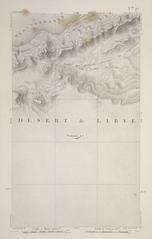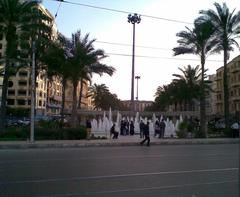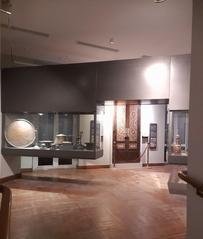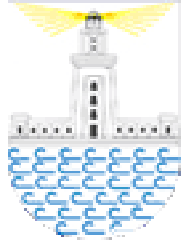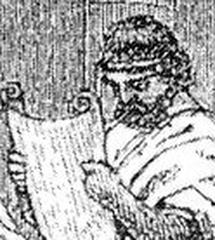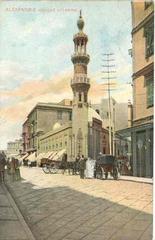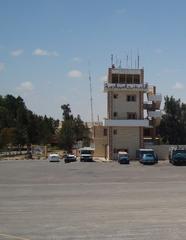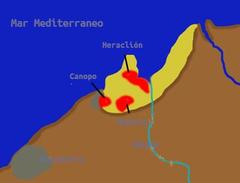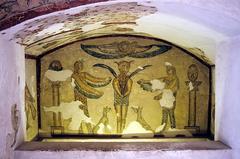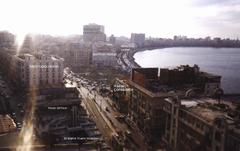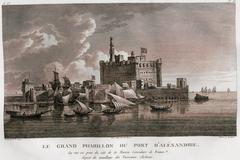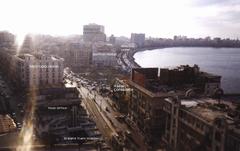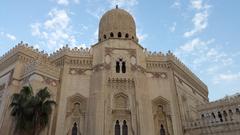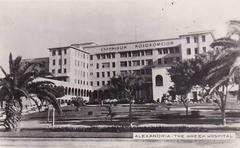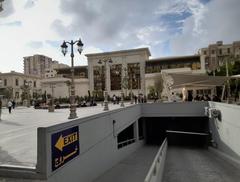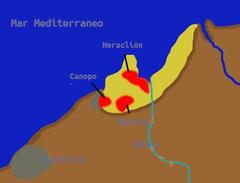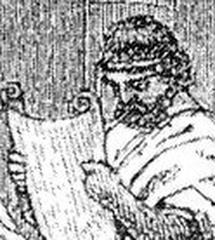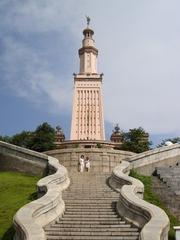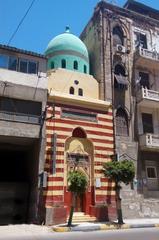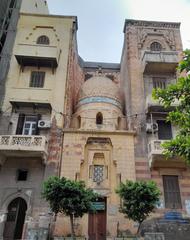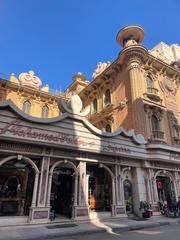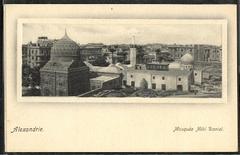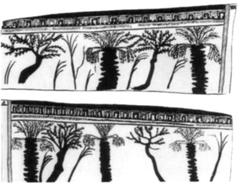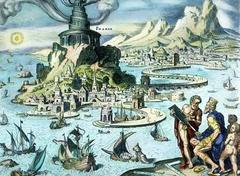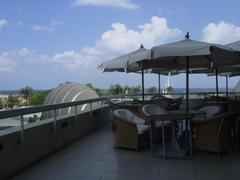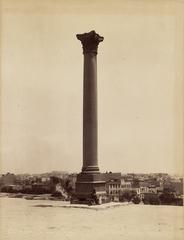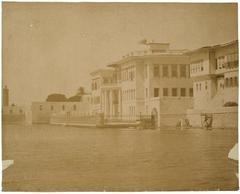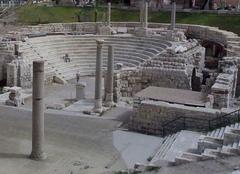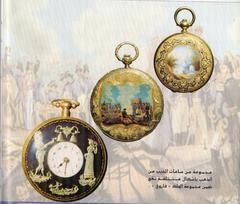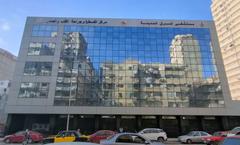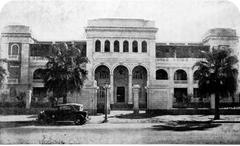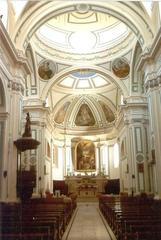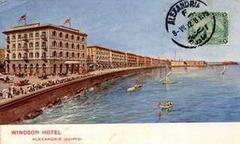Sidi Bishr Mosque Visiting Hours, Tickets, and Alexandria Historical Sites Guide
Date: 14/06/2025
Introduction
Sidi Bishr Mosque, located in the vibrant Sidi Bishr district of Alexandria, Egypt, is a distinguished landmark that bridges the city’s Islamic heritage with its dynamic urban present. Named after the revered Sufi saint Sheikh Bishr al-Gawhari, the mosque embodies centuries of spiritual devotion, architectural innovation, and community engagement. For those exploring Alexandria’s historical sites, Sidi Bishr Mosque offers a unique window into the city’s religious, cultural, and artistic landscape.
This comprehensive guide details the mosque’s rich history, architectural features, visiting hours, ticketing policies, accessibility, nearby attractions, and essential travel tips to ensure a rewarding and respectful experience. Whether you are a history enthusiast, spiritual seeker, or cultural explorer, Sidi Bishr Mosque invites you to immerse yourself in Alexandria’s multifaceted legacy.
Table of Contents
- Historical Background
- Architecture and Layout
- Visiting Information
- Nearby Attractions and Experiences
- Practical Travel Tips
- Frequently Asked Questions (FAQ)
- Conclusion
- References and Useful Links
Historical Background
Origins and Development
Sidi Bishr Mosque traces its origins to the late 19th century as a modest tomb for Sheikh Bishr al-Gawhari, a renowned Sufi figure with roots in North Africa and Andalusia (Egyptian Ministry of Antiquities). As Alexandria expanded eastward, the mosque evolved to meet the spiritual needs of a growing community, transforming into a spacious religious complex that attracted both locals and pilgrims from afar.
Architectural Evolution
The mosque’s design reflects a harmonious blend of Ottoman, Egyptian, Moroccan, and Andalusian influences. Its prominent dome, horseshoe arches, intricate tilework, and distinctive minaret—shaped in the form of an obelisk—showcase Alexandria’s cosmopolitan character (Archnet). Major expansions in the 20th century increased capacity and added features such as a landscaped garden and public square, further integrating the mosque into the city’s urban fabric (SceneNow).
Significance in Alexandria’s Urban Growth
The mosque’s development paralleled Alexandria’s transformation from an Ottoman port to a modern metropolis. Its proximity to the Alexandria Tram and other transportation links made it a focal point for both spiritual gatherings and civic life (Alexandria Tramways Company). The addition of a square and garden in the 1940s cemented its role as a communal hub.
Religious and Cultural Importance
Sidi Bishr Mosque serves as a center for Sufi practices, hosting regular dhikr (remembrance) ceremonies, spiritual retreats, and the annual mawlid festival honoring Sheikh Bishr al-Gawhari. These events draw participants from across Egypt and the wider region, reinforcing the mosque’s role as a beacon of Alexandria’s Islamic heritage (Al-Ahram Weekly).
Heritage and Preservation
Recognized as a protected heritage site, the mosque benefits from ongoing conservation efforts led by the Egyptian Ministry of Antiquities and partners such as UNESCO. Restoration projects have addressed structural challenges, particularly concerning the dome and garden areas, ensuring the mosque’s preservation for generations to come (UNESCO World Heritage Centre).
Architecture and Layout
Spatial Organization
The mosque’s layout consists of two main rectangular sections: the northern sahn (open courtyard) surrounded by arcades, and the southern qibla iwan (main prayer hall) featuring three octagonal porticoes and pointed arches. This arrangement accommodates large congregations and provides tranquil spaces for reflection (hurghadalovers.com).
Exterior and Interior Features
- Facades and Entrances: The mosque’s facades blend traditional Islamic motifs with local Egyptian elements. The main entrance is grand and welcoming, with three principal entryways serving the prayer halls and courtyard (cairotoptours.com).
- Minaret: Positioned in the northeastern corner, the obelisk-shaped minaret is a visual landmark, symbolizing both religious and national identity (hurghadalovers.com).
- Dome: Constructed from sheet metal and supported by six columns with intricate muqarnas, the dome enhances acoustics and serves as the mosque’s architectural centerpiece.
- Courtyard (Sahn): The central courtyard features a traditional ablution fountain and is enclosed by arcades, offering shade and space for gathering.
- Prayer Halls: The qibla iwan is spacious and includes a second-floor women’s hall, ensuring inclusivity.
- Calligraphy and Ornamentation: Interiors are adorned with Quranic verses, geometric patterns, and arabesque motifs, reflecting Alexandria’s artistic heritage (toptenegypt.com).
Materials and Construction
Built in 1858 AD, the mosque utilizes stone, brick, sheet metal, and wood. Renovations have preserved its historical character while introducing modern amenities (hurghadalovers.com).
Lighting and Ambiance
Natural light streams through windows and arcades, creating a serene interplay of light and shadow. Sunrise and sunset provide especially striking visual experiences (evendo.com).
Integration with Surroundings
Located near the Mediterranean seashore, the mosque’s gardens and public square offer a tranquil buffer from city life and enhance its role as a neighborhood landmark (cairotoptours.com).
Visiting Information
Visiting Hours
- General Hours: Daily from 8:00 AM to 6:00 PM (hours may be extended during Ramadan and special events).
- Non-Muslim Visitors: Best visiting times are between 9:00 AM–12:00 PM and 2:00 PM–4:00 PM, outside of main prayer periods.
- Friday Prayers: Expect larger crowds around midday.
Tickets and Entry
- Entry Fee: Free for all visitors.
- Donations: Voluntary contributions are welcomed to support maintenance and charitable work.
Accessibility
- Wheelchair Access: Ramps and wide doorways are provided at main entrances. Some upper areas, such as the women’s hall, may have limited access.
- Assistance: Staff are available to help visitors with special needs; advance notice is recommended.
Dress Code and Etiquette
- Attire: Modest clothing is required. Men should wear long trousers and avoid sleeveless shirts. Women must cover their hair, arms, and legs (headscarves are available at the entrance).
- Shoes: Remove shoes before entering prayer halls; bags are provided for footwear.
- Behavior: Maintain silence and respect, especially during prayers. Photography inside is restricted during prayer times.
Guided Tours and Events
- Guided Tours: Can be arranged through local tourism offices or travel agencies. Many guides speak English, French, and other languages.
- Special Events: The annual mawlid, Ramadan prayers, and other religious festivals offer vibrant cultural experiences.
Facilities and Amenities
- Ablution Areas: Separate and clean facilities for men and women.
- Restrooms: Available, though it is advisable to bring tissues.
- Courtyard Seating: Shaded areas for rest.
- Bookshop: Sells religious texts and souvenirs.
- Drinking Water: Provided free of charge.
Safety and Security
- Security: Visible personnel and surveillance; bag checks at entrances.
- Neighborhood: Generally safe; avoid isolated areas after dark.
Photography and Souvenirs
- Photography: Permitted in exterior areas; restricted inside, especially during prayers. Always seek permission before photographing people.
- Souvenirs: The bookshop offers Qur’ans, prayer beads, and locally crafted items.
Nearby Attractions and Experiences
- Sidi Bishr Beach: Popular for swimming and seafood dining.
- Sidi Bishr Market: Traditional stalls selling spices, textiles, and sweets.
- Royal Jewelry Museum and Montaza Palace: Easily accessible by taxi.
- Citadel of Qaitbay, Alexandria Library, Corniche: Other key Alexandria historical sites nearby.
Practical Travel Tips
- Wear shoes that are easy to remove.
- Bring a reusable water bottle and dress for the coastal climate.
- Carry small denominations of Egyptian pounds for donations and purchases.
- Learn a few basic Arabic greetings for a warmer reception.
- Plan visits around prayer schedules to avoid peak times.
- Maintain respect for local customs and religious practices.
Frequently Asked Questions (FAQ)
Q: What are the visiting hours of Sidi Bishr Mosque?
A: Open daily from 8:00 AM to 6:00 PM. Non-Muslim visiting hours are typically between 9:00 AM–12:00 PM and 2:00 PM–4:00 PM.
Q: Is there an entrance fee?
A: No, entrance is free. Donations are appreciated.
Q: Are guided tours available?
A: Yes, through local tourism offices and travel agencies.
Q: Is the mosque accessible for people with disabilities?
A: Main areas are accessible; some upper-level spaces may have limited access.
Q: What is the dress code?
A: Modest clothing is required; headscarves are available for women at the entrance.
Q: Are there nearby attractions?
A: Yes—Sidi Bishr Beach, the Citadel of Qaitbay, the Alexandria Library, and local markets.
Conclusion
Sidi Bishr Mosque stands as a living testament to Alexandria’s layered Islamic heritage, architectural elegance, and vibrant community spirit. From its origins as Sheikh Bishr al-Gawhari’s tomb to its prominent role as a spiritual and cultural hub, the mosque offers visitors a unique blend of history, artistry, and hospitality. With free entry, accessible facilities, and proximity to the city’s top attractions, it is a must-visit for anyone seeking to experience Alexandria’s rich cultural tapestry.
Plan your visit to Sidi Bishr Mosque today—for more updates, downloadable guides, and personalized tour options, download the Audiala app and explore our related articles on Alexandria’s heritage.
